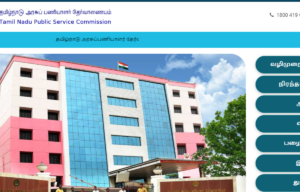Current Affairs 23rd August 2023 for UPSC Prelims Exam
PM-DevINE
Context: Revised guidelines have been issued by the Union Government for Prime Minister’s Development Initiative for North Eastern Region (PM-DevINE).
About PM-DevINE
- Definition: PM-DevINE is aimed at rapid and holistic development of the North- East Region by funding infrastructure and social development projects, based on felt needs of the States.
- It is a Central Sector Scheme with 100% central funding.
- Ministry: It will be implemented by Ministry of Development of Northeastern Region (DoNER).
- Budget: The 2022-23 to 2025-26 period has an approved outlay of Rs. 6,600 crores.
- Coverage: Under ‘PM-DevINE’, all eight North Eastern Indian states, including Arunachal Pradesh, Assam, Manipur, Meghalaya, Mizoram, Nagaland, Sikkim, and Tripura will be covered.
- Goals: The objectives of PM-DevINE are:
- To Fund infrastructure convergently, in the spirit of PM GatiShakti.
- To Support social development projects based on felt needs of the North East.
- To Enable livelihood activities for youth and women.
- To Fill the development gaps in various sectors
Current Affairs 22nd August 2023 for UPSC Prelims Exam
Debt-for-Nature Swap Deal
Context: Gabon has recently announced a $500 million debt-for-nature swap. In Africa, it is the largest such deal signed by any country to refinance its debt and conserve marine resources.
About Debt-for-Nature Swap Deal
- Definition: Debt-for-nature swaps allow heavily indebted developing countries to seek help from financial institutions in the developed world with paying off their debt if they agree to spend on conservation of natural resources.
- Usually banks in developed countries buy the debts of such counties and replace them with new loans which mature later. These have lower interest rates.
- Genesis: The notion of debt-for-nature swaps was first mooted in 1984 by Thomas Lovejoy, the former vice-president for science at the World Wildlife Fund-US, in response to the Latin American debt crisis.
- Working:
- A debt-for-nature swap can be multi-party or bilateral.
- The most common form of multi-party debt-for-nature deal is when a third-party institution usually an international non-governmental organisation buys part of a country’s external debt from the institution that had bought it initially, often at a discount.
- That organisation then agrees to let the debtor country pay the debt off by investing a certain amount of local currency – usually significantly less than the face value of the original debt – in a biodiversity conservation plan.
- In a bilateral deal, a country which owns some of another country’s debt agrees to discount it in exchange for the debtor country investing an agreed amount in a conservation plan.
- This frees the indebted country from having to pay off some of its debt in US dollars (which international debt is paid in), and it can instead invest its own resources to preserve its biodiversity.
- Advantages:
- Debt-for-climate swaps provide benefits for both creditors and debtors.
- Creditors can advance their development cooperation and climate finance goals, improve their chances of debt recovery, and strengthen their diplomatic ties with debtor nations.
- Debtors can reduce their external debt and debt service obligations, allocate fiscal resources towards other development priorities, promote climate action through domestic investment.
- Gabon’s Deal:
- Gabon’s debt has been restructured under a Blue Bond in the world’s second-largest debt-for-nature swap.
- Under the debt-for-nature swap, Gabon has agreed to a deal with the Bank of America, the US International Development Finance Corporation (USDFC) and The Nature Conservancy (TNC), to refinance $500 million in national debt toward marine conservation efforts in the country.
- Gabon has agreed to spend $5 million a year from the savings over the next 15 years on marine conservation.
- These funds will be used for advancing critical conservation goals, protecting endangered species and supporting the country’s sustainable ‘blue economy”.
Demon Particle
Context: Researchers at the University of Illinois recently discovered a demon particle that could lead to the making of superconductors that can operate in room temperature.
What is a Demon Particle?
- Atoms are the building blocks of matter, and electrons are one of the building blocks of atoms. Alone, these subatomic particles have a negative charge and a tiny bit of mass, but they can combine in solids to form “composite particles” with new charges and masses.
- In 1956, theoretical physicist David Pines predicted the existence of a composite particle in solids that would have no mass, no electric charge, and wouldn’t interact with light. He then gave it the name of demon particle.
- This name was chosen because the properties of demon particle seemed to defy the conventional understanding, much like a mythical or supernatural entity.
- Hence, it could be said that demon particle is not a particle in the traditional sense like a proton or electron. It is a “composite” particle made up of a combination of electrons, in a solid.
- It can also form plasmons (collective units of electrons) at room temperature, where larger particles wouldn’t typically form plasmons.
- The plasmons have a new charge and mass which arises out of the underlying interactions between the electrons.
- But the energy required to produce plasmons is so high that they cannot be produced at room temperature.
How Is it Useful in Superconductors?
- A superconductor, a special type of metal or alloy, possesses the remarkable ability to transmit electrical currents without any hindrance.
- However, current superconductors require the temperature to fall below 100 degrees Fahrenheit-mark to maintain their properties.
- The demon particle is a transparent, massless, and neutral particle, indicating its capacity to manifest regardless of temperature, within the metal strontium ruthenate.
- While superconductors already find use in applications such as maglev trains and MRI apparatus, the emergence of this new particle can provide opportunities for creation of more potent computing systems.
Global Initiative on Digital Health (GIDH)
Context: The World Health Organization and the G20 India presidency have announced a new Global Initiative on Digital Health (GIDH) at the Health Minister’s Meeting of the G20 Summit hosted by India.
About Global Initiative on Digital Health (GIDH)
- GIDH is one of the key deliverables of India’s G-20 Presidency. It will consolidate the evidence and “amplify recent and past gains in global digital health”.
- Definition: The Global Initiative on Digital Health (GIDH) is a WHO managed network of stakeholders organized to facilitate:
- Implementation of the Global Strategy on Digital Health 2020-2025 and
- Other WHO norms and standards for Digital Health System Transformation.
- The Initiative will serve as a platform to enable a wide global ecosystem to work collectively to promote country capacity and strengthen international cooperation in digital health.
- Aim: GIDH will ultimately aim to:
- Align efforts to support of the Global Strategy on Digital Health 2020–2025;
- Support quality-assured technical assistance to develop and strengthen standards-based and interoperable systems aligned to global best practices, norms, and standards.
- Facilitate the deliberate use of quality assured digital transformation tools that enable governments to manage their digital health transformation journey.
- Need:
- Recent experiences during the COVID-19 pandemic resulted in a boost in digital health use.
- So many countries expressed the need to establish national digital health infrastructure with appropriate governance, policy and a competent health workforce needed to select, maintain and adapt digital health interventions.
- Pillars: GIDH will address challenges such as duplication of efforts and “products-focused” digital health transformation through a focus on four foundational pillars:
- Country Needs Tracker – facilitating digital health investments to be informed by country priorities.
- Country Resource Portal – identifying traditional as well as innovative resource opportunities, and promoting transparency, while reducing the risk of duplication for
- enabling a standards-based prospective and retrospective analysis of resourcing gaps in digital health.
- Transformation Toolbox – advocating for quality-assured tools and resources that strengthen country capacity and autonomy to manage the national digital health transformation.
- Convening and Knowledge Exchange – promoting strengthened collaboration and knowledge exchange across global, regional, and national networks in digital health.

- Methodology: The GIDH initiative aims to bring countries and partners together to achieve measurable outcomes by:
- developing clear priority-driven investment plans for digital health transformation.
- improving reporting and transparency of digital health resources.
- facilitating knowledge exchange and collaboration across regions and countries to accelerate progress.
- supporting whole-of-government approaches for digital health governance in countries; and
- increasing technical and financial support to the implementation of the Global Strategy on Digital Health 2020–2025 and its next phase.


 TNPSC Group 1 Previous Year Question Pap...
TNPSC Group 1 Previous Year Question Pap...
 Why are Tensions High in the Arctic?
Why are Tensions High in the Arctic?
 Delimitation: Issues, Legal and Constitu...
Delimitation: Issues, Legal and Constitu...





















